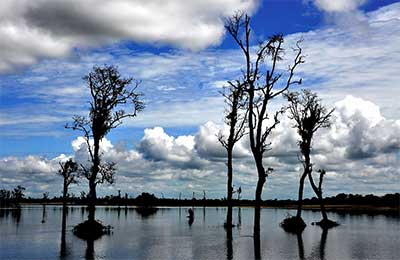Dibru-Saikhowa National Park (DSNP)
On 7th December , The Gauhati high court stayed approval given to Oil India Limited (OIL) to explore hydrocarbons at seven locations inside the Dibru-Saikhowa National Park (DSNP) in Assam. The plea by petitioners in this regard had sought the stay on permission given to OIL by the Centre in May to drill for hydrocarbons at seven locations in Dibru-Saikhowa National Park.
The division bench stayed the environmental clearance for non-compliance with a Supreme Court order of 2017 which required OIL to conduct a biodiversity impact assessment study.
Issue of loss of biodiversity with such projects :
Maguri Motapung Beel is less than 10 km from Dibru-Saikhowa National Park and part of the Dibru-Saikhowa Biosphere Reserve. It is an Important Bird Area notified by the Bombay Natural History Society and declared by birdlife international.
Maguri Motapung wetland is a precious natural capital for this region, providing critical habitat to numerous species, notably resident and migratory birds as well as being a fisheries resource, a flood buffer and a water and sediment regime regulator. The wetland regime is a critical part of the Dibru-Saikhowa Biosphere Reserve, an ecological corridor to Namdhapa National Park, and sustains the ecological integrity of the Indo-Burma Biodiversity Hotspot.
Previous threat on dibru saikhowa region :
A gas leak has occurred at Baghjan well in Tinsukia district of Assam following a blowout few months back.
The Baghjan well is a purely gas-producing well in Tinsukia district, and is at an aerial distance of 900 metres from the Dibru-Saikhowa National Park. It has been drilled by Oil India Limited (OIL) since 2006.
About Dibru saikhowa national park :
The sprawling Dibru Saikhowa National Park, spread over an area of 650sq km, is located close to the eastern border of Assam, straddling both the districts of Dibrugarh and Tinsukia. An identified Important Bird Area (IBA), it is most famous for the rare white-winged wood ducks as well as feral horses.
In 1997, Dibru Saikhowa National Park became the ninth biosphere reserve out of the total 18 identified till date in India. Earlier known as Dibru Reserve Forest and Saikhowa Reserve Forest, this protected area was notified as a wildlife sanctuary in 1986, and a national park in 1999.
The park is bounded by the Brahmaputra river, Lohit river and Arunachal Hills in the north and Dibru river, Debang river, Dibru and Patkai hills in the south.
The natural vegetation of the region comprises tropical moist deciduous forests, tropical semi-green forests, Salix swamp forests, moist evergreen forests, grasslands.
Endemic Flora of the park : Rauvolfia (Sarpagandhi), Benteak, Livistona (orchid)
Endemic Fauna of the park : White winged wood duck, Hollock-gibbon, Wild buffalo.
There are two species of monitor lizards, eight species of turtles and eight species of snakes in the park and Dibru saikhowa biosphere reserve. The turtles such as Malayan box turtle, Asian leaf turtle, spotted pond turtle, brown roofed turtle, Assam roofed turtle, Indian tent turtle, Indian soft-shell turtle and narrow headed soft-shell turtle, besides 62 species of fish have been recorded.







